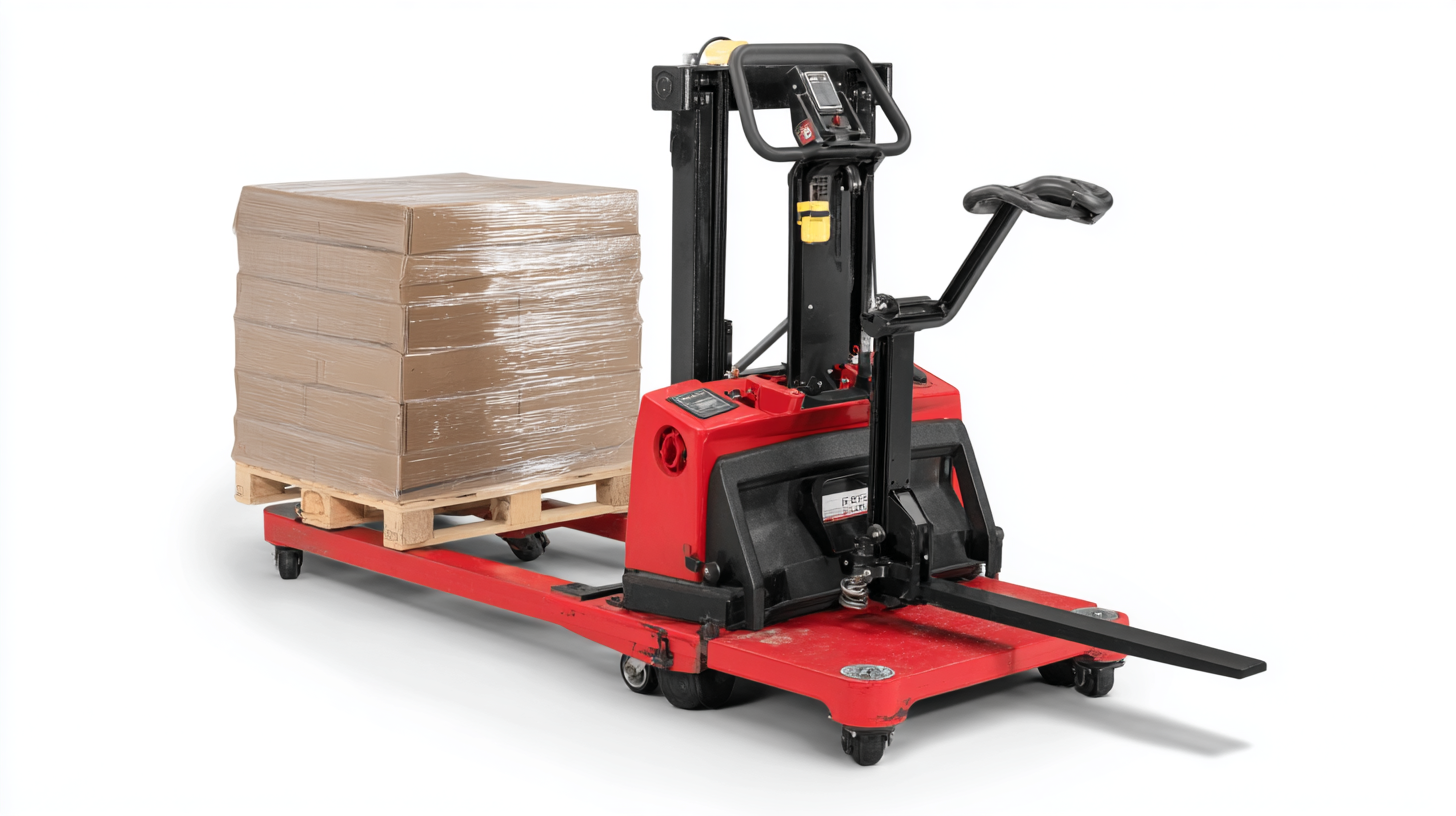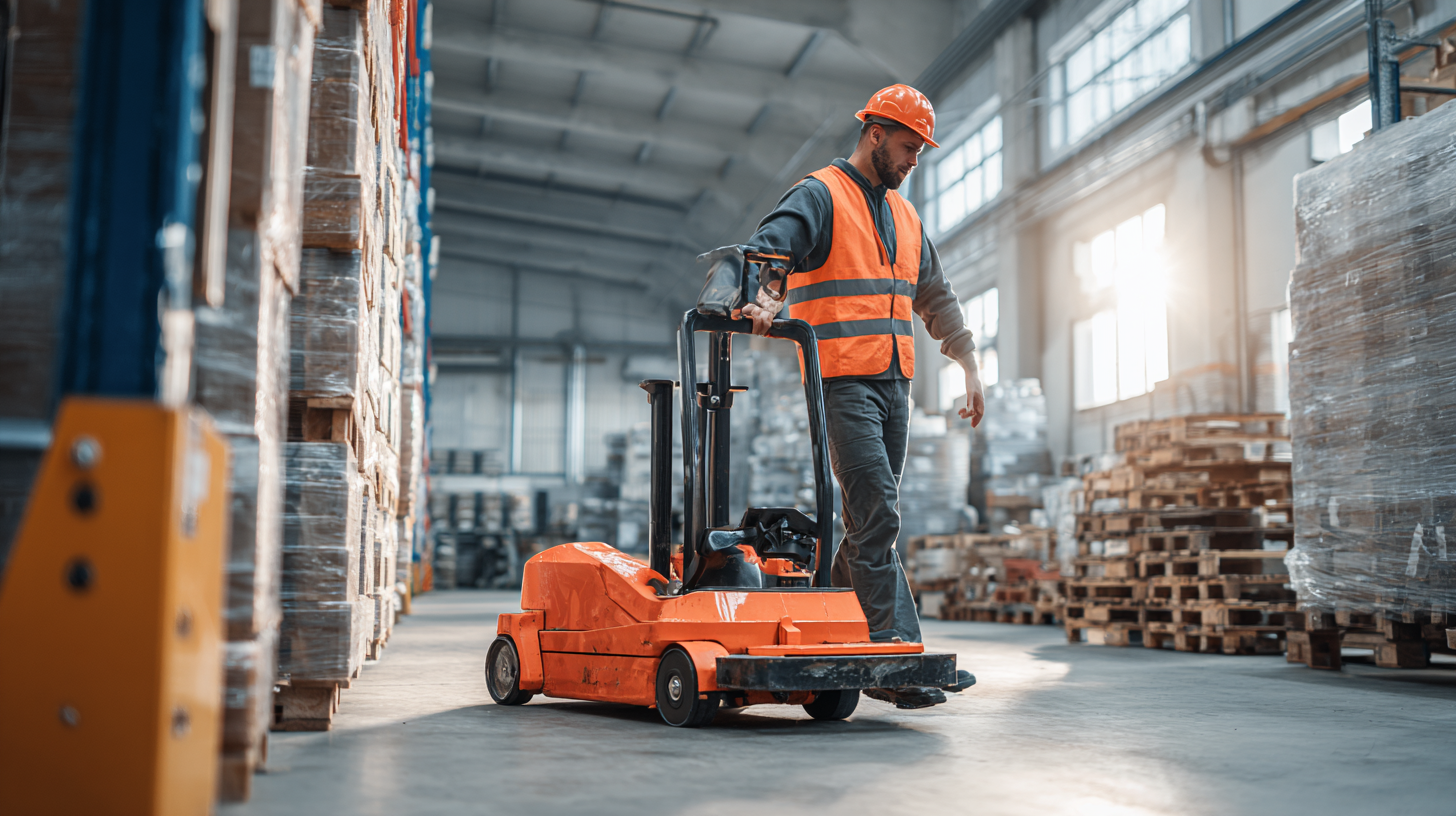Leave Your Message
In the world of material handling, the Manual Hand Pallet Jack stands out as an indispensable tool for improving efficiency and productivity in various industries. These versatile machines are designed to simplify the process of lifting and transporting goods, making them a favorite among warehouse managers and logistics professionals. Beyond their practical applications, this guide explores the myriad advantages of Manual Hand Pallet Jacks, from their exceptional after-sales service to their comparatively lower maintenance costs. Additionally, we will delve into the industry standards that underscore their reliability and effectiveness, while providing you with valuable tips on choosing the best models suited for your specific needs. Whether you're looking to enhance your warehouse operations or simply seeking a cost-effective solution for material handling, understanding the benefits of Manual Hand Pallet Jacks is crucial for making informed decisions.

Manual hand pallet jacks play a crucial role in the efficiency of modern warehousing solutions. These versatile tools allow workers to move heavy pallets with ease, significantly reducing the physical strain associated with manual material handling. In an era where warehouse operations are increasingly focused on safety and efficiency, manual hand pallet jacks stand out due to their simplicity and effectiveness, ensuring that tasks are completed swiftly without the risk of injury from improper lifting techniques.
As the pallet jack market is projected to grow significantly—valued at USD 1.7 billion in 2025 and expected to reach USD 3 billion by 2035—this equipment is set to remain a staple in warehouses and distribution centers. The rising emphasis on ergonomic solutions in material handling has led to innovations designed to enhance safety and productivity. In addition to traditional manual jacks, warehouse operators are beginning to integrate robotic technology to complement human efforts, aiming to further reduce workplace injuries and boost overall operational efficiency. This trend showcases the evolving landscape of warehousing, where manual hand pallet jacks continue to be pivotal in maintaining operational fluidity amidst advancing automation.
Emerging technologies are significantly shaping the future of manual pallet jacks, despite their longstanding reputation as basic material handling equipment. Innovations in design and functionality are making these tools more efficient and versatile. For instance, the integration of smart sensors and automation capabilities not only enhances user experience but also maximizes safety. This technological evolution is critical, especially as industries such as logistics strive for increased efficiency. The last-mile delivery sector heavily relies on hand trucks and carts, underscoring their essential role in modern supply chains.
Moreover, as the logistics landscape evolves—driven by shifting demographics and heightened demand for faster, safer deliveries—manual pallet jacks are adapting to new challenges. Companies are investing in smarter inventory solutions, which helps manage the complexity of e-commerce and automated warehouses. This transformation reflects a broader trend of automation and technological advancement, positioning manual pallet jacks not just as basic tools, but as vital components of an efficient logistics ecosystem. As businesses navigate these changes, the future of manual pallet jacks appears promising, blending traditional functionality with the demands of modern technology.
When choosing a manual hand pallet jack, several key features set high-quality models apart from the rest. One of the most critical aspects is the lifting capacity. According to the Material Handling Industry (MHI), the standard lifting capacity for manual pallet jacks typically ranges from 4,500 to 5,500 pounds. Opting for a jack that can handle your specific load requirements ensures efficiency and safety in your operations.
Another essential feature is the ergonomics of the handle. The Occupational Safety and Health Administration (OSHA) emphasizes the importance of minimizing manual handling injuries in the workplace. High-quality pallet jacks often come equipped with ergonomic handles that provide a comfortable grip and reduce strain during operation. Additionally, the inclusion of features such as quick-release hydraulic systems and integral brakes can enhance performance and safety, factors highlighted in recent industry reports from the Material Handling Equipment Distributors Association (MHEDA). These elements collectively contribute to the overall efficiency and user-friendliness of manual hand pallet jacks, making them indispensable in various settings.
Manual hand pallet jacks have established themselves as industry standards for various reasons, making them an essential tool in warehouses and distribution centers. First and foremost, they offer unmatched maneuverability in tight spaces, allowing operators to efficiently navigate congested areas. Their simplicity in design means that training time is minimal, ensuring that new employees can quickly become proficient in handling them.

Additionally, manual hand pallet jacks are cost-effective and require no fuel or electricity, making them a convenient choice for operations looking to minimize overhead costs. With the global pallet jack market projected to grow significantly, expected to reach USD 3 billion by 2035, it's clear that businesses are recognizing the value of incorporating these essential tools into their logistics processes.
Tips: When selecting a manual hand pallet jack, consider the weight capacity and fork width to ensure it fits your specific needs. Regular maintenance, such as lubricating the wheels and checking the hydraulic system, can extend the lifespan of the equipment. Also, always prioritize safety by ensuring your team is trained in proper handling techniques to prevent accidents in the workplace.
In 2025, the debate between manual and electric pallet jacks continues to evolve, with professionals in logistics and warehousing weighing the pros and cons of each. According to a 2023 report by the Material Handling Industry, manual pallet jacks have seen a resurgence in popularity due to their low operating costs and ease of maintenance. In contrast, electric pallet jacks offer enhanced productivity, particularly in larger operations where time savings can translate to significant financial benefits.
When considering the best option, it’s crucial to evaluate operational needs. Manual pallet jacks are often preferred for smaller warehouses or those with limited budgets. In fact, research indicates that companies utilizing manual models can save up to 30% in initial investment compared to their electric counterparts. However, electric models can handle heavier loads and reduce worker fatigue, thereby improving overall efficiency in high-demand environments.
Tip: If you’re leaning towards manual pallet jacks, ensure regular maintenance to maximize their lifespan. On the other hand, if considering electric options, look for battery models with quick recharge capabilities for uninterrupted operation. Balancing your workforce's needs with equipment capabilities is key to optimizing workflow in your facility.

